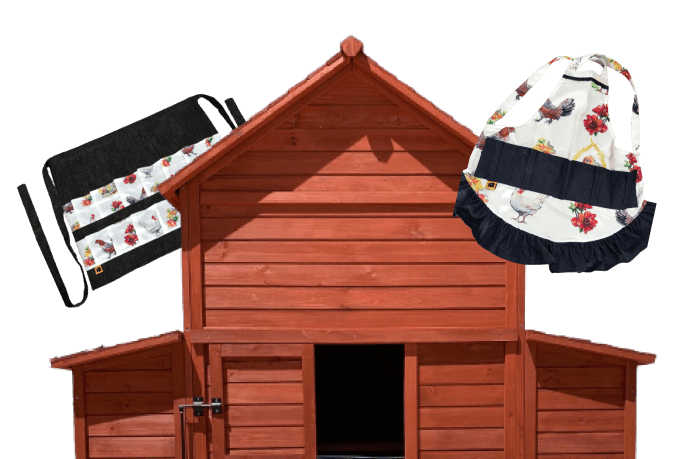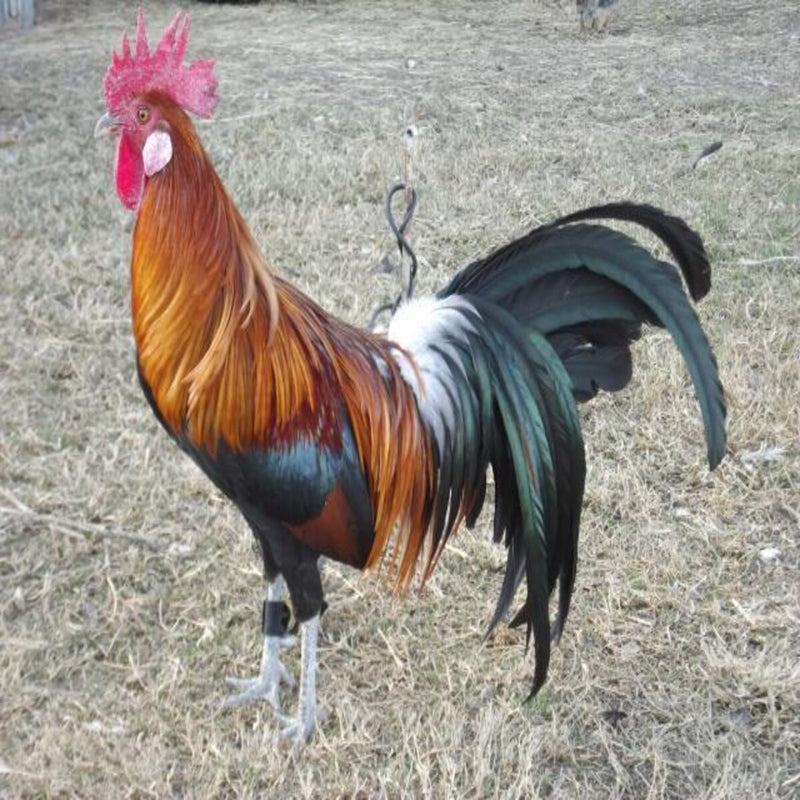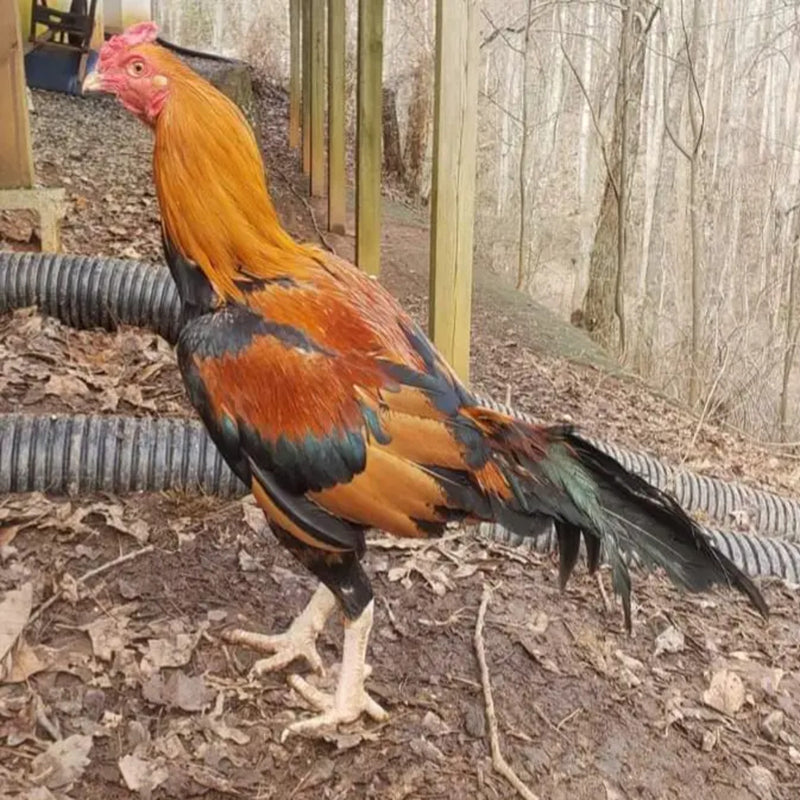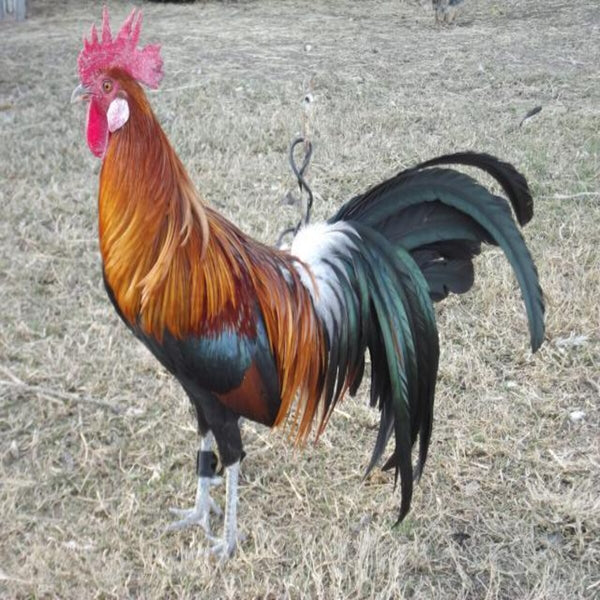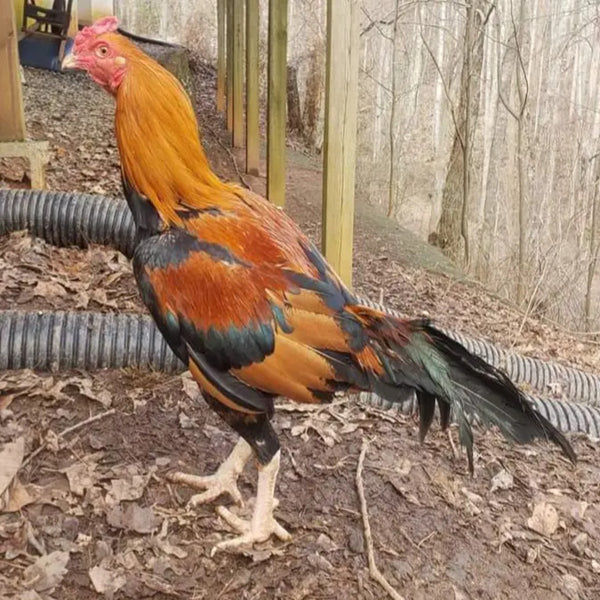-
Egg Size
Small
-
Egg Quantity
Very Good (4/wk)
-
Egg Color
Cream
-
Cold Tolerance
Not Cold Hardy
-
Heat Tolerance
Tolerates Heat Well
-
Abundance
Rare
-
Personality
Calm
-
Size
Large Fowl
-
Feathered Feet
No
Black Breasted Red & Wheaton Aseel
Black Breasted Red & Wheaton Aseel
The Black Breasted Red and Wheaten Aseel chickens are known for their distinctive appearance and strong, muscular build. With their firm, large-boned structure and wide stance, Aseels are one of the most robust and resilient chicken breeds. Originally developed in South Asia, these birds have a rich history and were often used in the creation of other breeds, such as the Cornish, through selective crossbreeding.
Aseels are excellent mothers and are known for their strong brooding instincts. However, they are highly territorial and should not be housed with other birds of the same gender, as this can lead to aggressive behavior and potentially fatal fights.
Aseels are considered a rare and unique breed, not commonly found in backyard flocks. Their docile nature makes them surprisingly easy to handle, and they can become quite tame with regular human interaction. Despite their many positive traits, Aseels are seasonal layers and are not prolific egg producers, making them less suitable for those looking to maintain a steady supply of eggs.
This breed’s rarity and distinct characteristics make the Black Breasted Red and Wheaten Aseel a fascinating choice for poultry enthusiasts who appreciate the history and uniqueness of their flock.
 Black Breasted Red (BBR) Aseel
Black Breasted Red (BBR) AseelFeather Color:
The BBR Aseel rooster features a deep, glossy black breast and underbody, with rich red-orange to copper hackles, shoulders, and saddle feathers. Tail feathers are black with greenish iridescence. Hens are more muted—brownish-red with some black in the tail and wings.
Wheaten Aseel
Feather Color:
Roosters have golden to reddish hackles and saddle feathers, with creamy or pale wheat-colored body feathers. Hens are soft tan to pale wheat throughout, with minimal contrast. Their warm, earthy tones blend well with natural surroundings.
Shared Physical Traits
Body Type:
Short, stocky, and extremely muscular. Aseels are one of the most compact and powerfully built chicken breeds. Broad chest, thick thighs, and upright stance make them resemble small game birds.
Head and Comb:
Prominent, strong skull with a curved beak and thick neck. Small pea or cushion comb, ideal for heat and cold tolerance. Face is usually red with well-developed wattles in males.
Legs and Feet:
Thick, muscular legs—often yellow or white depending on the strain. Feet are wide-set with prominent spurs, especially in roosters.
Size:
Standard Aseels are heavy for their compact size. Males typically weigh 6.5–8.5 pounds; females 5.5–6.5 pounds. Bantam versions are also bred for shows.
Temperament
Bold and Assertive:
Aseels are intelligent, proud, and confident birds. Roosters in particular are territorial and should not be housed with other males. Hens are calmer but still carry the breed’s alert nature.
Not Beginner-Friendly:
Due to their dominant behavior and strong personalities, Aseels are best kept by experienced poultry keepers or those familiar with game breeds.
Extremely Hardy:
Mentally and physically tough. They adapt well to both hot and cold climates and are incredibly resilient under challenging conditions.
Egg Production
Low but Steady Layers:
Hens lay around 40–80 small cream or tinted eggs per year. Aseels are not bred for egg production but are reliable enough for small-scale, self-sustaining flocks.
Broodiness:
Highly broody and excellent natural mothers. They are protective and will hatch and raise chicks effectively without assistance.
Chick Hardiness:
Chicks are slow to mature but grow into robust adults. They need a higher protein diet to support their muscular development.
Health and Care
Extremely Robust:
Aseels are one of the most disease-resistant chicken breeds. Their dense muscle mass makes them less prone to many typical poultry issues.
Feeding Needs:
Require high-protein feed for proper growth and maintenance of muscle. Supplement with grains and greens. For breeders or show birds, careful feeding is crucial to manage weight and appearance.
Clean Living Environment:
Despite their toughness, clean water, dry bedding, and shelter from damp conditions are necessary to maintain their full potential.
Housing
Space Requirements:
Need more space than average chickens due to their assertive nature and territorial behavior—especially males. Avoid overcrowding.
Secure Pens:
Roosters must be kept separate or with careful supervision. Hens do well in small groups. Strong fencing is essential, as they are aggressive toward threats and may injure other birds.
Roosting and Nesting:
Adaptable to basic roosts and nesting boxes. Ensure nesting areas are private and secure, especially when hens are broody.
Frequently Asked Questions:
What are the physical characteristics of Red & Wheaten Aseel chickens?
Black Breasted Red & Wheaten Aseels are known for their large, muscular build with a wide stance. They have a firm, large-boned structure, which gives them a robust appearance. The Black Breasted Red variety features a striking contrast of black and red plumage, while the Wheaten variety has a more subdued, golden hue.
Are Aseel chickens good layers?
Aseels are not known for their egg-laying abilities. They are seasonal layers and produce a limited number of eggs each year. Because of this, they are not recommended for those primarily interested in egg production.
Can Aseel chickens be kept with other chickens?
Aseel chickens are highly territorial and should not be housed with other chickens of the same gender. Doing so can lead to aggressive behavior, including fighting that may result in injury or death. It’s important to provide them with a suitable environment where they can thrive without conflicts.
Are Aseel chickens good for beginners?
Aseel chickens are generally not recommended for beginners due to their unique care requirements and territorial nature. They require careful handling and a well-managed environment to prevent aggressive behavior. However, with proper care and attention, they can be docile and even enjoy being handled.
What makes Aseel chickens unique?
Aseels are a rare and historically significant breed, originally developed in South Asia. Their strong, muscular build and wide stance make them stand out among other chicken breeds. They are also excellent brooders and mothers, with a temperament that can be quite docile if they are handled regularly.
Black Breasted Red & Wheaten Aseel Facts
- Poultry Show Class: All Other Standard Breeds, Orientals Class
- Weights: Hen—–4 lbs
- Rooster—–5 1/2 lbs
- Pullet—-3 lbs
- Cockerel—-4 1/2 lbs
- Purpose and Type: Ornamental, meat; Exhibition
- Egg Shell Color: Cream or Tinted
- Egg Production: Poor
- Egg Size: Small
- Temperament: Aggressive
- Fertility Percentage: 40-55%
- Broody: Setter
- Mating Ratio: 4 Pullets to 1 Cockerel
- Roost Height: 4 to 6 feet
- Country of Origin: India
- APA: Yes, Recognized by the Standard of Perfection in 1981.
- TLC: Critical Status, Considered a sustainable heritage chicken breed
- Breeder Farm Source: Poultry Breeding Farm has been developing our bloodline or strain of pure Black Breasted Red Aseel (Asil) since 1996.
Notice: We do not sell items on Amazon or other websites.
